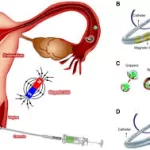A groundbreaking study suggests that emotional awareness and expression therapy (EAET) might surpass cognitive-behavioral therapy (CBT) in reducing chronic pain severity. The study, published in JAMA Network Open, indicates that EAET led to significantly greater reductions in chronic pain compared to CBT, the current gold standard in psychotherapy for chronic pain.
In a randomized clinical trial involving 126 veterans, two-thirds of those who received EAET reported at least a 30% reduction in pain, in contrast to only 17% of those treated with CBT. This substantial difference in effectiveness marks a potential shift in how chronic pain is treated, especially for individuals also struggling with depression and anxiety.
“Most people with chronic pain don’t consider psychotherapy at all,” noted Dr. Brandon C. Yarns, a staff psychiatrist at the VA Greater Los Angeles Healthcare System and clinical professor at UCLA Health. Despite continuing their medication regimens, patients receiving EAET experienced larger improvements in pain, depression, and anxiety, suggesting the therapy itself was responsible for the benefits observed.
A New Therapeutic Approach
First utilized in the early 2010s, EAET involves patients recalling difficult or traumatic memories, experiencing related emotions physically, expressing these feelings verbally, and then releasing them. This method contrasts sharply with CBT, which focuses on teaching patients to tolerate pain through guided imagery, muscle relaxation, and cognitive reframing.
Previous studies have shown EAET’s effectiveness in reducing pain associated with conditions like fibromyalgia and chronic musculoskeletal pain. However, these studies primarily involved younger, female participants. The current research, however, is notable for its diverse sample: older veterans, predominantly men, with complex medical and psychiatric profiles.
Participants, aged 60-95, had at least three months of musculoskeletal pain and included a significant number with psychiatric diagnoses, such as PTSD. All treatments were administered in person at the VA Greater Los Angeles Healthcare System, with patients receiving either CBT or EAET in one 90-minute individual session followed by eight 90-minute group sessions.
Impressive Results
Patients rated their pain on a 0-10 scale before starting treatment, at the end of the sessions, and six months post-treatment. The baseline score for both groups was around 6. Post-treatment, the EAET group reported a mean pain reduction of two points, compared to a 0.60-point reduction in the CBT group. Notably, 63% of EAET patients experienced a clinically significant pain reduction (≥30%) versus 17% of CBT patients.
Six months later, the mean reduction in pain was 1.2 for the EAET group and 0.25 for the CBT group, with 40% of the EAET group maintaining a significant pain reduction. Moreover, over one-third of EAET patients reported at least a 50% reduction in pain at the 10-week mark, compared to 7% in the CBT group, with 16% of the EAET group maintaining this level of pain reduction at six months.
EAET also outperformed CBT in alleviating anxiety, depression, and PTSD symptoms at the 10-week mark.
Looking Forward
Dr. Matthias Karst of Hannover Medical School, in an editorial accompanying the study, emphasized that EAET’s integration of bodily emotional experiences is key to its effectiveness, suggesting it could be superior to cognitive approaches in chronic pain therapy. Dr. Traci J. Speed of Johns Hopkins University highlighted the study’s groundbreaking nature, particularly its effectiveness in patients with high rates of PTSD, anxiety, and depression.
However, Dr. Speed cautioned that while promising, EAET is still in its infancy compared to the decades of evidence supporting CBT. Both Karst and Speed agree that more research is needed to determine the sustainability of EAET’s effects and how to personalize the therapy for individual patients.
Dr. Yarns, the study’s lead investigator, acknowledged the need for further research to refine EAET’s application and dosing. This study was funded by the VA Clinical Science Research and Development Service, with Yarns receiving grants from the US Department of Veterans Affairs.
As chronic pain experts continue to explore EAET, it may become a valuable addition to the therapeutic arsenal, offering new hope to those suffering from chronic pain.











